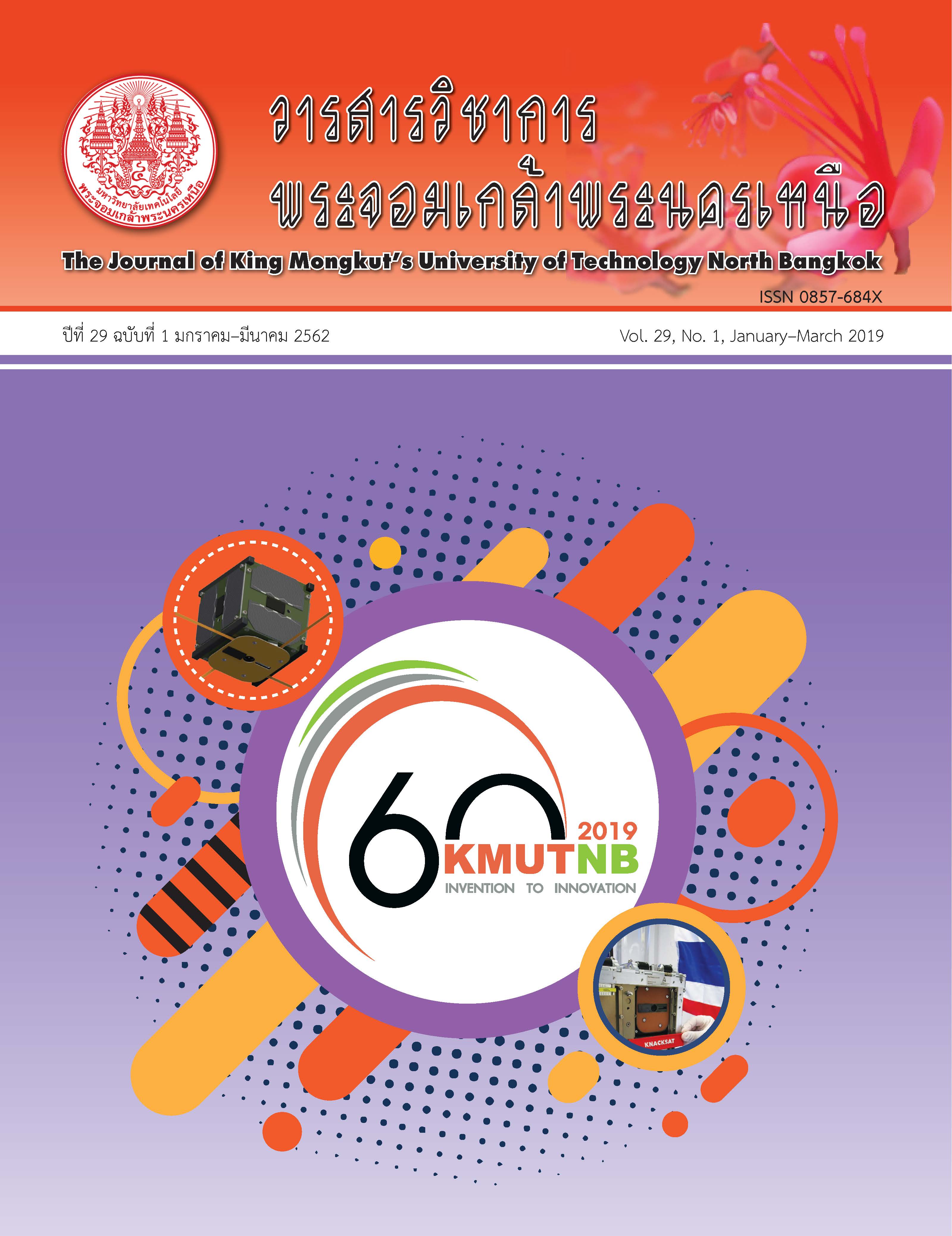Dyeing of Nano Carbon and Titanium Dioxide Coated Monk Robes Using Natural Dye Powder
Main Article Content
Abstract
This research intends to developed nano carbon and titanium dioxide coated monk robes dyeing with natural dye powder. The physical property of cotton, silk and muslin fabrics coated with nano carbon and titanium dioxide were investigated. The antifungal, antibacterial and UV protection properties were also characterized. Cotton, silk and muslin fabrics coated with nano carbon and titanium dioxide could inhibited both gram-positive and gram-negative bacteria. Light fastness properties of cotton, silk and muslin fabrics without coated and coated with nano carbon and titanium dioxide dyed with Allium ascalonicum Linn. and Gareinia dulcis Kurz average level were 3–4 (moderate to good) and washing fastness properties average were 4–5 (good to very good). The ability to prevent UVA and UVB rays of cotton, silk and muslin fabrics coated with nano carbon and titanium dioxide with ratios 0.01 : 0.49 (g) reflected the UPF value of UV protection was more than 50, with the maximum UV protection (over 98 percent) and had percent transmittance of an ultraviolet B rays of ≤2.5.
Article Details
The articles published are the opinion of the author only. The author is responsible for any legal consequences. That may arise from that article.
References
[2] Trigiworn. (2017, May 17). Trigiworn. [Online]. Available: http://th.wikipedia.org/wiki/ไตรจีวร (in thai)
[3] What is the color of the robe?.(2018, Nov. 27). [Online]. Available: http://www.ch3thailand.com/news/scoop/13534 (in thai)
[4] A. Yadav, V. Prasad, and A. Kathe, “Functional finishing in cotton fabrics. using zinc oxides nanoparticles,” Bulletin of Materials Science, vol. 29, no. 6, pp. 614–645, 2006.
[5] K. Maabong, C. M. Muiva, P. Monowe, T. S. Sathiaraj, M. Hopkins, L. Nguyen, K. Malungwaand, and M. Thobega, “Natural pigments as photosensitizers for dye-sensitized solar cells with TiO2 thins films,” International Journal of Renewable Energy Research, vol. 5, no. 1, pp. 501–506, 2015.
[6] L. Karimi, S. Zohoori, and A. Amini, “Multiwall carbon nanotube and nano titanium dioxide coated on cotton fabric for superior self-cleaning and UV blocking,” New Carbon Material, vol. 29, no. 5, pp. 380–385, 2014.
[7] M. Z. B. Mukhlish, F. Najnin, M. M. Raman, and M. J. Uddin, “Photocatalytic degradation of different dyes using TiO2 with high surface area: A kinetics study,” Journal of Scientific Research, vol. 5, no. 2, pp. 301–314, 2013.
[8] Thai Encyclopedia for Youth. (2018, October). Nanomaterials. Thai Junior Encyclopedia Project By Royal Command Of H.M. The King. Bangkok. Thailand [Online]. Available: http://kanchanapisek.or.th/kp6/sub/book/book.php?book=32&chap=8&page=t32-8-infodetail04.html (in thai)
[9] L. Karimi, M. Mirjalili, and M. E. Yazdanshenas, “Effect of nano TiO2 on self-cleaning property of cross-link cotton fabrics with succinic acid under UV irradiation,” Photochemistry and Photobiology, vol. 86, no. 5, pp. 1030–1037, 2010.
[10] G. Goncalves, P. A. A. P. Marques, R. J. B. Pinto, T. Trindade, and C. P. Neto, “Surface modification of cellulosic fibres for multi-purpose TiO2 based nanocomposites,” Computer Science Technology, vol. 69, no. 7–8, pp. 1051–1056, 2009.
[11] Q. Li, S. L. Chen, and W. C. Jiang, “Durability of nano ZnO antibacterial cotton fabric to sweat,” Journal of polymer Science, vol. 103, pp. 412–416, 2007.
[12] S. Tangkawanit, M, Chantarangsee, B. Tangkanobon, and C.Supasorn, “Development of natural dyes powder for cotton and silk industrial in Ubon Ratchatani,” Ubon Ratchathani Rajabhat University, Thailand, Research Report, pp. 1–212, 2008 (in thai).
[13] R. M. Silverstein and F. X. Webster, Spectroscopic Identification of OrganicCompounds. John Wiley & Sons Inc., 1998, pp. 214.
[14] W. Hongguang, G. Xian, and H. Li, “Grafting of nano-TiO2 onto flax fibers and the enhancement of the mechanical properties of the flax fiber and flax fiber/epoxy composite,” Composites Part A: Applied Science and Manufacturing, vol. 76, pp. 172–180, 2015.
[15] G. Wang, “Enhanced photocatalytic activity of TiO2 Powders (P25) via calcination treatment,” International Journal of Photoenergy, vol. 2012, pp. 1–9, 2012.
[16] S. Wang, Q. Ma, H. Liu, K.Wang, L. Ling, and K. Zhang, “Robust electrospinning cellulose acetate@TiO2 ultrafine fibers for dyeing water treatment by photocatalytic reactions,” The Royal Society of Chemistry, vol. 5, no. 1, pp. 40521–40530, 2015.
[17] M. H. Haghi, B. J. Mohammad, S. Saman, M. Kazem, F. Farzad, and S. G. Marjan. “Antibacterial effect of TiO2 nanoparticle on pathogenic strain of E. coli.,” International Journal of Advanced Biotechnology and Research, vol. 3, pp. 621–624, 2012.
[18] F. Alimohammadi, M. P. Gashti, and A. Shamei, “A novel method for coating of carbon nanotube on cellulose fiber using 1,2,3,4-butanetetracarboxylic acid as a cross-linking agent,” Progress in Organic Coatings, vol. 7, no. 3, pp. 470–478, 2012.
[19] M. Abbasipour and M. K. Mehrizi, “Investigation to changes of reflective behavior of cotton/polyester fabric by TiO2 and carbon black nanoparticles,” Scientia Iranica, vol. 19, no. 3, pp. 954–957, 2012.
[20] D. Grifoni, L. Bacc, S. Di, L. Patrizia, Pi. Arianna, S. Francesca, C. Francesco, S. Gaetano, and Z. A. Romani. “UV protective properties of cotton and flax fabrics dyed with multifunctional plant extracts,” Dyes Pigments, vol. 105, pp. 89–96, 2014.

